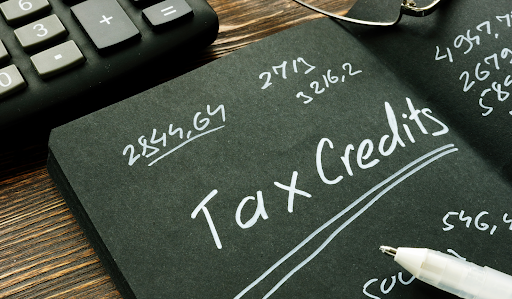One of the main reasons why people start up a business is because they understand the importance of running a business on a budget.
Businesses are expensive. Besides having to pay out wages, employee benefits, and other general expenses, there are also additional costs that are involved with the running of a business such as payment of rent, overhead costs, and utilities. These expenditures can add up quickly. When you factor in taxes from all levels (federal, provincial, city) and the cost of doing business (insurance, advertising for new customers), running a self-employed enterprise or small business can be very challenging.
Every business knows that taxes can have a huge impact on its profits.
Even the most profitable businesses often struggle to turn a profit. This is especially true for small businesses as they do not have the same access to tax deductions as large corporations. If you run and operate your own business, you must be aware of the tax credit programs in place and implement them for your benefit. For small businesses that don’t have enough funds for paying taxes, tax credits programs can represent an easy way to reduce their costs.
What is a tax credit program?
A tax credit program is a type of government-sponsored program that provides incentives to businesses and individuals to invest in certain types of activities.
For example, if you invest in a new business, you may be eligible for tax credits to help offset the cost of your investment.
Tax credit programs are designed to encourage certain types of investments, such as those that will create jobs or increase employment opportunities for disadvantaged workers. They can also be used to encourage investments.
Tax credit programs can also be used in conjunction with other types of government incentives, such as grants and loans. The two are often used together because they provide different types of incentives to businesses. For example, a tax credit may cover the cost of your investment while a grant or loan helps you pay for the materials required to complete it.
They also exist for people who want to reduce their taxes by working in the community. For example, if you volunteer at your local food bank or soup kitchen, you may be able to claim that time as a tax credit. This means that instead of paying taxes on the money you make from working at these places, you’ll receive money back from the government as a result of your hard work!
The goal of a tax credit program is not only to encourage certain types of investments but also to provide an incentive for people who would not have otherwise invested in these areas. In some cases, this means providing tax relief for people who wouldn’t be able to afford it otherwise. For some, it means incentivizing people who earn too much money to take risks with their money by offering them tax relief if they do so successfully.
What are the types of tax credit programs?
The tax credit programs can be broadly categorized into two categories: refundable and non-refundable.
Non-refundable tax credits are available to taxpayers who have paid taxes but did not owe any money to the government. These credits can be used to reduce the amount of income taxes owed by the taxpayer or they can be carried forward to future years.
Refundable tax credits are those that are available to taxpayers who have no income tax liability after all deductions and exemptions have been taken into account. These types of credits can be used to offset other taxes such as social security and healthcare payroll taxes, self-employment taxes, or corporate taxes instead of reducing income tax liability.
5 Tax Credit Programs To Reduce Your Business Cost
You’ve done your research, and you know that there is a lot of different information about tax credits out there to help reduce the cost of running your business. But where do you begin?
Here’s a quick rundown of 5 different types of business tax credits that you can take advantage of:
1. Scientific Research and Experimental Development Tax Credit
In Canada, The Scientific Research and Experimental Development Tax Credit (SR&ED) is a federal tax incentive program that encourages Canadian businesses to undertake scientific research and experimental development activities by providing eligible corporations with a financial incentive. The program helps companies increase their scientific knowledge, improve competitiveness and stimulate innovation, which ultimately creates new jobs and economic growth.
Eligible corporations must have incurred eligible expenditures during a taxation year to claim the credit. Eligible expenditures include wages paid to employees who perform SR&ED and other expenses directly related to SR&ED. For example, an eligible corporation can claim wages paid to its employees for SR&ED performed in Canada or abroad. In addition, an eligible corporation can claim overhead expenses incurred on behalf of SR&ED performed by others, such as contractors or consultants.
The amount of the SR&ED refunds are based on a percentage of eligible expenditures incurred during a taxation year. The percentage varies depending on whether the corporation’s gross revenue for that year was more or less than $500,000. If a corporation’s gross revenue was less than $500,000, it may claim 15% of its eligible expenditures up to a maximum of $250,000. If gross revenue was more than $500,000 but less than $1 million, then it may claim 20% of its eligible expenditures up to a maximum of $750,000.
2. Work Opportunity Tax Credit
The Work Opportunity Tax Credit (WOTC) is a tax credit that incentivizes employers to hire individuals from certain target groups. It is an incentive for employers to hire individuals from target groups that have traditionally had difficulty finding employment, such as ex-felons and homeless veterans. Employers that hire eligible individuals may be able to reduce their federal tax liability by up to $2,400 per employee. The credit amount varies depending on the length of time the individual has been unemployed.
Eligibility for the WOTC depends on several factors. If you employ at least one eligible individual, then you may be able to take advantage of the credit. The amount of the credit depends on the length of time that individual has been unemployed, the type of business you are running, and whether the business has received a certification from one of several state agencies.
For example, if you hire an ex-felon who has been out of work for at least 4 weeks, you can claim a tax credit for up to $2,400. If you hire someone unemployed for more than 6 months, you can claim a credit of up to $4,800. And if you hire someone unemployed for over 12 months, your maximum credit is $9,600!
3. Alternative Fuels Tax Credit
The Alternative Fuels Tax Credit is a federal tax credit that incentivizes the use of alternative fuels and vehicles by reducing their cost. The credit can be claimed by businesses or individuals who purchase alternative fuel automobiles, trucks, and buses and install equipment to produce their alternative fuels.
The Alternative Fuels Tax Credit has been in place since the inception of better options for fuel; it offers a tax credit equal to 10% of the cost of converting an existing vehicle or purchasing a new vehicle that uses alternative fuel. The credit is non-refundable, which means it can only be used to offset taxes owed, not to reduce taxes due from a previous year.
To be eligible for the Alternative Fuels Tax Credit, you must own or lease a business vehicle that runs on compressed natural gas (CNG), liquefied petroleum gas (LPG), propane, or electricity. You must also use the vehicle primarily (more than 50%) in your business operations. The Alternative Fuels Tax Credit can also be used for purchasing or leasing a new electric vehicle, but not for converting an existing vehicle to electric.
4. Historic Rehabilitation Tax Credit
The Historic Rehabilitation Tax Credit is an incentive that allows a business to deduct up to 20% of the cost of rehabilitating a building from their taxes. The credit is available to businesses that are engaged in historic renovations and preservation, as well as businesses that are restoring buildings that have been vacant for five years or more. This is a great way for businesses to save on the cost of restoring older buildings, which can be expensive. The credit can be taken in the year following expenditures or subsequent years.
The renovation tax credit can be a great way to get started on your business cost. However, there are limits on how much you can spend per year on your project to qualify for this tax credit. If you have a large project in mind, it might be better suited for another type of funding sources like a loan from your bank or other financial institution. It’s also important to keep in mind that the credit is only available for qualified properties, which means that your building must be at least 20 years old. If you have any questions about whether or not your building qualifies, it might be worth doing some research before filing your taxes.
Conclusion
The tax credit is meant to encourage more film production in any country and spur economic growth and create jobs. It is part of an overall strategy for economic development, which includes attracting businesses from other states through tax incentives and trade agreements. So if you want to reduce your business cost in Canada, try applying for some of these tax credit programs.





Be First to Comment